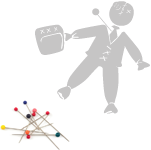Maximizing Case Values – 5 Ways to Boost the Value of a Claim
 Your clients hired you in part because they
want the maximum compensation for their
claims. Are you maximizing every dollar from
your cases?
Your clients hired you in part because they
want the maximum compensation for their
claims. Are you maximizing every dollar from
your cases?
The following are some tips to help you make good on your promise to fight for top dollar for your clients’ cases:
- Do you know where to look for additional insurance?
In cases with policy limits, you may find during an investigation there are several additional policies that can add value to the case. These policies may include underinsured or uninsured motorist coverage, liability insurance, no fault insurance, personal injury protection insurance and other coverage. Be sure to conduct a thorough insurance investigation.
- Are you calling your clients regularly?
Stay connected with your clients. Your clients want to hear from you or someone from your office (preferably their attorney). Many plaintiffs cite the lack of communication between them and their attorney as a reason for finding new counsel. Call them regularly to keep them up-to-date on their cases. Share any new developments, good or bad. If weeks have gone by and nothing is happening with a client’s case, call him anyway and ask him how he’s doing. Your client might have information that can have an effect on the claim. You might find out that your client has stopped following up with treatment, which brings us to the next point ….
- Are they following up with the medical treatment they need?
It’s bad enough when clients fail to seek immediate medical treatment after an accident, but some of them stop attending follow-up doctor appointments. That sends a message to insurance companies and juries that the injury is either minor or the injury must be healed. Don’t assume that your clients are continuing their treatment. Whenever you meet with or talk to clients on the phone, you will need to ask them about their follow up medical treatment. You may need to remind them that not scheduling or skipping appointments can compromise their personal injury claim. Let them know that significant gaps between treatments also may hurt the claim by suggesting the original injury healed and they suffered a fresh injury unrelated to the accident.
- Are investigations and witness statements being taken?
A successful claim often hinges on the plaintiff’s lawyer’s investigation. How thorough is yours? Did you interview your client yet? Talk to any witnesses? Have you obtained police reports or incident reports? Did you go to the scene of the accident and take photographs? Did you get pictures of the damaged vehicles and injuries suffered by your client? Have you hired the appropriate experts? A comprehensive investigation requires these steps be taken – and more.
- Have you put all possible parties on notice?
Your client may not realize who’s to blame for the accident. Or maybe the client is not sure if more than one party has contributed to the accident. It’s best to notify all involved to cover the bases as soon as possible. That means even the client’s own insurance company and health insurance carrier. For a car accident, send a notification letter to the drivers in all the other vehicles and owners of those vehicles. For a slip and fall accident, notify the business manager and the business owner or the owner of the house or apartment if the injury was sustained by a tenant. For a dog bite, notify the property owner. And for defective products, notify the manufacturer of the faulty item.




